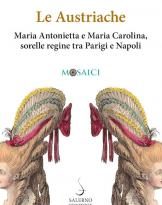Susy Dan Lombardi
Ed. Itinera Progetti, Bassano del Grappa (VI) 2009
pagg.229
The author, an entrepreneur with a great passion for everything related to flight, in this essay, the result of years of research that led her to graduate in Contemporary History at the Ca 'Foscari University of Venice under the guidance of prof. Mario Isneghi, focuses on the adventurous period of the origins of flight.
If in the nineteenth century the train had symbolized progress and the advent of a new era, now, with the new century, it is flight that takes on the face of modern Prometheus. " In Italy, however, "The development of aviation had been characterized by the enthusiasm of some and by the skepticism and distrust of most, even among the top military hierarchies." A conceptual delay that resulted in a delay in production, making Italy dependent on foreign countries both for projects and for the supply of raw materials. "Of the airplanes supplied to the Italian air force in May 1915, in fact, not one was of Italian conception."
In the beginning there were balloons and airships for which, however, there were no real pilot schools. "Builders and pilots were therefore self-taught. "
It was the private initiative, with the first production of Italian aircraft and engines, that played a leading role in the first decades of aviation. Many were the sporting events that, starting from the 1906, were organized in the Italian skies both for balloons and for powered aircraft. Among these, the most important, was that of Brescia in September 1909, "An event to which the royalty of the blood and the royalty of thought were convened."
In the 1911, with the Libyan war, Italy was the first nation in the world to use aviation for war purposes. The fleet consisted of 9 airplanes. "Men and vehicles embarked in Naples on October 12 on the steamers Enrichetta, Sannio and Plata towards Tripoli." To these were later added the airships.
The 1 ° November, for the first time in the world, was tested, from Italian aviation, the launch of bombs from a vehicle in flight, bombs that were thrown overboard by the pilot. The plane was also used as a propaganda tool, with the launch of proclamations and flyers.
Giulio Dohuet played a fundamental role in creating an aeronautical mentality with his numerous writings on the subject. It was he who theorized, already in the 1910, that in the future he would also fight in the air. "It is not the flight itself that fascinates Dohuet, but its military applications, as well as its, still unexplored, possibilities as a means of locomotion."
Furthermore, Italy was the first in the world to establish an organic seaplane service, with the establishment in Venice, the 25 April 1913, of a Navy Aviation Section having an allocation of 8 aircraft, under the direction of the Lieutenant of Manlio vessel Knee.
However, despite the "World premiere of the Libyan war", Italy entered the war with a fleet numerically much lower than that of other nations, as well as for mentality problems also, most likely, for "The poisonous polemics and personal aversions between the top aeronautics managers and the anything but transparent relations between military, politicians and industrialists, with the inevitable intertwining of public and private interests." The aviation industry, on the other hand, in the years between the Libyan war and the First World War, "It is experiencing a phase of intense but little creative development, thanks to the production of foreign aircraft and engines under license." But even the aviation of the central empires was not doing very well. "At the time of entering the war, the Italian air force is made up of two large nuclei: the Army Air Force [...] and the Navy Air Force"
In the first months of the war "The intended use for aviation is mainly long-distance exploration, in competition with cavalry and cyclists, while the bombing is entrusted to airships."
In the winter of 1915 hunting was born - the absolute protagonist of this specialty was Francesco Baracca - "As a result of the bombing and reconnaissance activities, to which it provides escort service and defense against enemy aircraft attacks."
The simultaneous use of all three Italian aviation specialties - reconnaissance, hunting, offense - was the 24 May 1917 for the first time. The naval aviation, on the other hand, had an intense development in February 1917, with the admiral Paolo Thaon of Revel. “After Caporetto the use of air weapons underwent an important evolution. Individual initiative tends to operate increasingly in bulk. "
In February, 1918 entered into service the SVA, an aircraft made popular by the flight on Vienna, the August 9, by Gabriele D'Annunzio. The contribution of aviation in the battle of the Piave, in June 1918, and in the final battle of Vittorio Veneto was very effective. The very action of the Navy seaplanes also proved to be very important in those same weeks.
"Wanting to draw an overall balance of the role of Italian aviation in the conflict, we could say that it was brilliant, but secondary. The air war has aroused a great impression, above all in the populations, but it has not brought decisive results. [...] The most lasting and profitable legacy of these tumultuous years are the exploits of Baracca, D'Annunzio, Salomone, Piccio, Scaroni, Ruffo di Calabria, the knights of heaven whose names have impressed themselves so indelible in the collective imagination and whose figures come out of the war surrounded by an aura of heroism and legend. "
Gianlorenzo Capano












